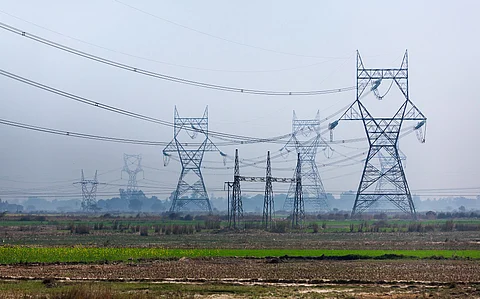

The IEA's Electricity Mid-Year Update 2025 predicts a significant rise in global electricity demand over 2025-26, driven by increased use of air conditioners, data centers, and electric vehicles.
Despite economic slowdowns, heatwaves continue to boost demand.
Renewables are set to surpass coal-fired generation, with solar and wind covering most of the demand increase, reshaping electricity markets worldwide.
Growing use of air conditioners, expansion of data centres, ongoing electrification of vehicles and rising demand from industry and appliances are driving global electricity demand, which is expected to rise much faster over 2025-26 than it did during the past decade, according to the Electricity Mid-Year Update 2025, released by the International Energy Agency (IEA) on July 30. The report highlights that despite a slowdown in economic activity, which has weighed on global electricity use so far in 2025, heatwaves continue to add to demand in many regions, as they did in 2024.
While the latest forecasts for global electricity demand growth—3.3 per cent this year and 3.7 per cent in 2026—are a deceleration from the 4.4 per cent surge recorded in 2024, they remain well above the 2015-2023 average of 2.6 per cent. Overall, global electricity consumption will reach a new high of over 29,000 terawatt-hours (TWh) in 2026.
While China and India are expected to see more moderate growth rates in 2025, following strong surges in electricity demand in 2024 driven by intense heatwaves and strong economic activity, US electricity demand is set to increase at a faster rate than in 2024, boosted by power consumption from expanding data centres. In the EU, the report forecasts, electricity demand will continue to rise, albeit at a moderate pace as the industrial sector has still yet to recover.
In the first half of 2025, while coal-fired generation declined year-on-year in China and India, it increased in the US and the EU, states the report. The declines in China and India were due to more moderate demand growth compared with the same period in 2024 and strong expansion in output from renewables. By contrast, in the US, both renewable generation and coal-fired output rose strongly, with the latter boosted by gas-to-coal switching due to higher natural gas prices compared with 2024. In the EU, even though solar PV output broke new records, lower wind and hydropower generation resulted in increased gas- and coal-fired generation year-on-year, states the report.
The report forecasts that depending on weather trends and economic developments, renewable generation is expected to surpass coal-fired output as early as 2025 or by 2026 at the latest. Following this milestone, coal’s share in total generation will drop below 33 per cent for the first time in a century. Solar photovoltaic systems and wind energy are central to this shift, with their combined share of global electricity generation forecast to grow from 15 per cent in 2024 to 17 per cent in 2025, reaching almost 20 per cent by 2026—a near-fivefold increase from just 4 per cent a decade ago. In fact, wind and solar photovoltaic systems are expected to cover over 90 per cent of the increase in global electricity demand in 2025. Global coal-fired generation is forecast to move into slightly negative territory in 2025 following growth of 1.3 per cent in 2024.
Global nuclear power generation is on track to reach a new record high in 2025 and will continue its upward trajectory in 2026. This is driven by plant restarts in Japan, robust output in the US and France, and the commissioning of new reactors in China, India, Korea and several other countries. Global nuclear generation is expected to rise by an average of 2 per cent over the 2025-26 period, states the report.
As low-emissions sources displace fossil-fired supply, global carbon dioxide emissions from electricity generation are expected to plateau this year, with a slight decline forecast in 2026. Emissions from electricity generation already showed signs of slowing in 2024 when they rose by 1.2 per cent, following growth of 1.6 per cent in 2023. This was despite even hotter temperatures in 2024 than in 2023, which boosted electricity demand for cooling. The rapid deployment of renewables is limiting increases in power generation from fossil fuels, but abnormal weather conditions—such as intense heat waves, cold spells or below-average rainfall (affecting hydropower output)—can lead to fluctuations in emissions levels from one year to the next, states the report.
“The strong expansion of renewables and nuclear is steadily reshaping electricity markets in many regions. But this must be matched by greater investment in grids, storage and other sources of flexibility to ensure power systems can meet the growing demand securely and affordably,” said Keisuke Sadamori, IEA Director of Energy Markets and Security, referring to recent blackouts around the world. For instance, on February 25, a transmission system failure in Chile left 99 per cent of the country’s 20 million residents without power for 17 hours. Just weeks later, on April 28, a complex series of events triggered a blackout in Spain and Portugal that lasted over 10 hours, affecting tens of millions of people and businesses. “Robust grid infrastructure and secure supply chains, combined with diverse flexibility resources and technical stability solutions, are key pillars of electricity security. As power systems evolve, it will be essential for stakeholders to adapt operational frameworks by updating grid codes, reserve requirements and regulatory structures,” states the report by IEA.